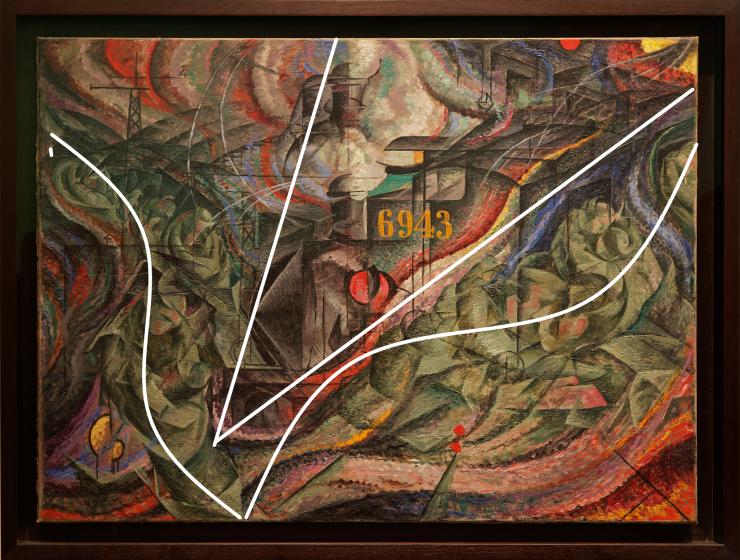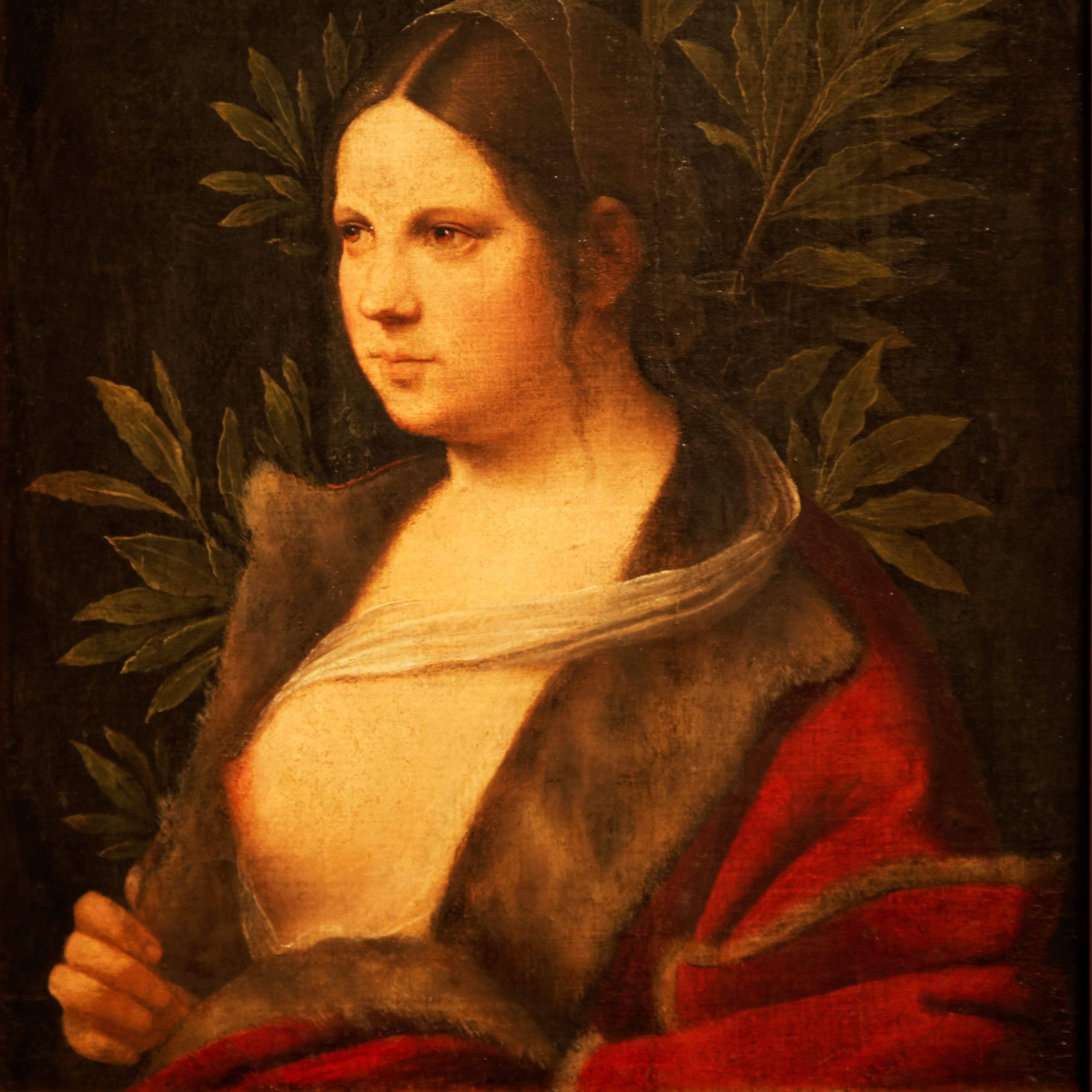
Umberto Boccioni (1882-1916) met the painter Giacomo Balla in 1901, who introduced him to French divisionist painting. It was in his studio that he met the painter Gino Severini. In 1907, he moved to Milan. On February 20, 1909 Marinetti published the « Manifesto of Futurism » in the Figaro newspaper, which set out the main ideas of this new literary movement. The text was quickly translated into Italian and aroused the enthusiasm of the young Boccioni. A year later, in 1910, he signed, together with the painters Carra, Russolo and Severini, « The Manifesto of the Futurist painters ». In 1911 Boccioni went to Paris where he discovered Cubism. It was on his return that he painted a series of three paintings, entitled « States of mind ».
With this series, Boccioni treats the theme of separation in three different moments.

In « The farewells », Boccioni evokes, through a tangle of lines and colours, the chaos of a station platform before the train’s departure. Here and there, he still leaves some easily recognizable elements: locomotive with its steam-spitting chimney, railway post, couples embracing. The frenzy of the departure is suggested by a series of intersecting lines and colours with a dominant of warm colours (red, orange, yellow). This impression is redoubled by the movement of the couples on a serpentine line that starts at the top left of the canvas, moves towards the spectator and goes back to the bottom of the painting. It pushes forward through the triangle of the locomotive.



In « Those who go », the movement of the departing train is symbolized by a multitude of oblique lines. These elusive lines, which cut into the faces of the characters, attempt to capture the emotion of those who are leaving, even though the faces seem strangely inexpressive and like automatons. The cold colours (blue and green) take precedence over the warm colours.

Finally, in « Those who stay », the cold colours have invaded the entire space of the painting. The painter sets up a tight weave of vertical lines in which the bodies of the characters merge. This gives a feeling of desolation.
To paint his trilogy, Boccioni was undoubtedly inspired by a triptych by Charles Cottet, dating from 1898, which was very well known at the time, and which deals with the departure of Breton sailors.
Boccioni brings the stage into the modern world as it takes place in a railway station. He emphasizes the myth of the machine, symbol of the advancing civilization. He thus inscribes his work in the ideals of Futurism. Boccioni, like his friends, rejects the classical tradition and exalts the modern world by insisting particularly on the rise of the city, the glorification of the machine and speed. He places himself as the heir to Bergson’s philosophy and Einstein’s theory of relativity according to which stability is a retrograde illusion. Like Marinetti in the Manifesto of 1910, Boccioni could take up:
A racing car […] is more beautiful than the Victory of Samothrace
However, although his trilogy is very close to the ideals of Futurism, Boccioni is also influenced by other influences. There is a remnant of Symbolist influence in these paintings: in the reference to Cottet’s painting first of all, but also in the fact of wanting to paint a subject that expresses above all a feeling. The title testifies to this, it is about states of mind. He is still inspired by divisionist painting, notably in » Those who go » with its series of oblique strokes. He takes up French divisionist painting as he discovered it in Balla’s studio, but perhaps he is also inspired by his two great Italian elders, Giovanni Segantini and Giuseppe Pellizza da Volpedo, who both used the application of juxtaposed strokes.


He is also influenced by Cubism, which he discovered during his trip to Paris. We find it in his will to break down the image and show the simultaneity of reality (notably in « The farewells » or in the way he represents faces in » Those who go »). The use of numbers, stenciled on the locomotive of » The farewells », is also directly inspired by the practices of Cubist painters.
Through this trilogy, Umberto Boccioni expresses the frenzy of the modern world and the psychological effects of this perpetual chaos on individuals. Still attached to symbolist and cubist references, « States of mind » is one of the first works of the artist to experiment with the fundamental principles of Futurism and which will lead him to seek ever more dynamism in these compositions.
And you, what do you think about this ?






